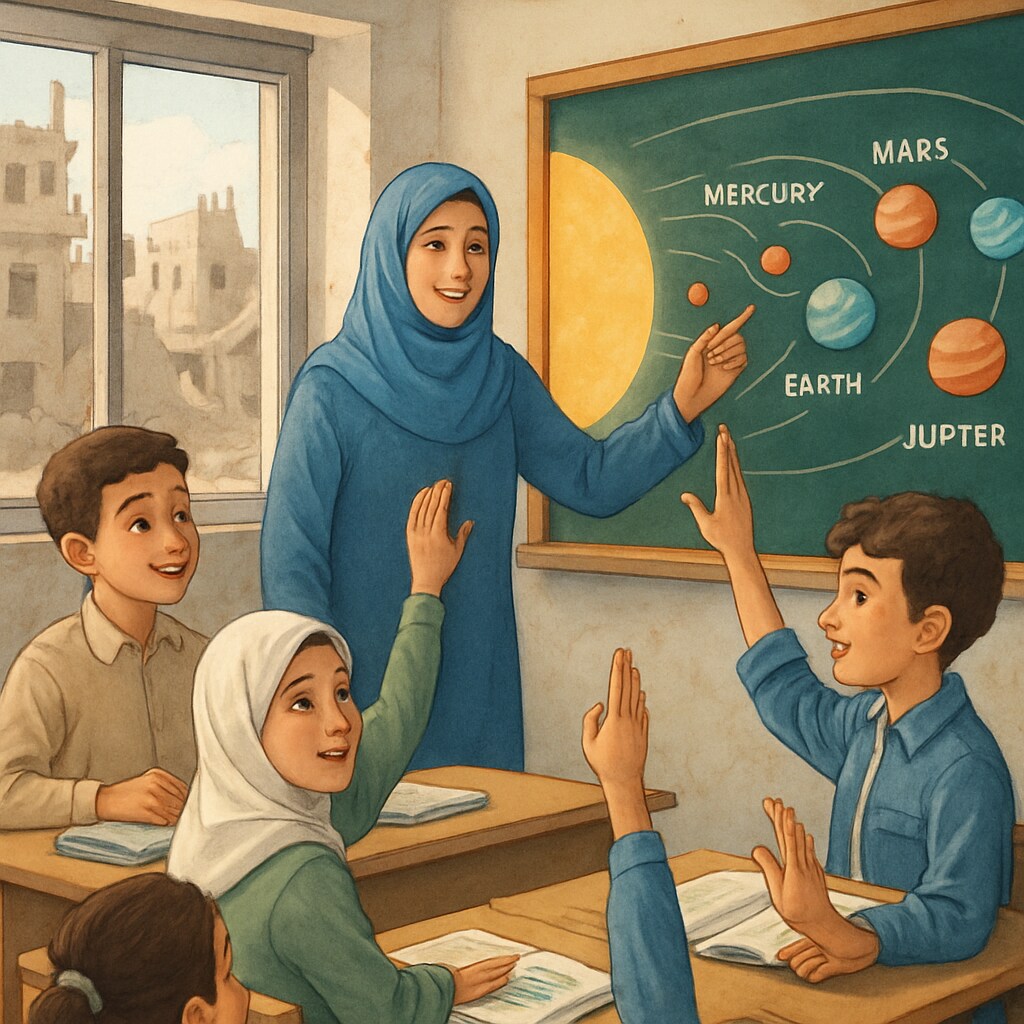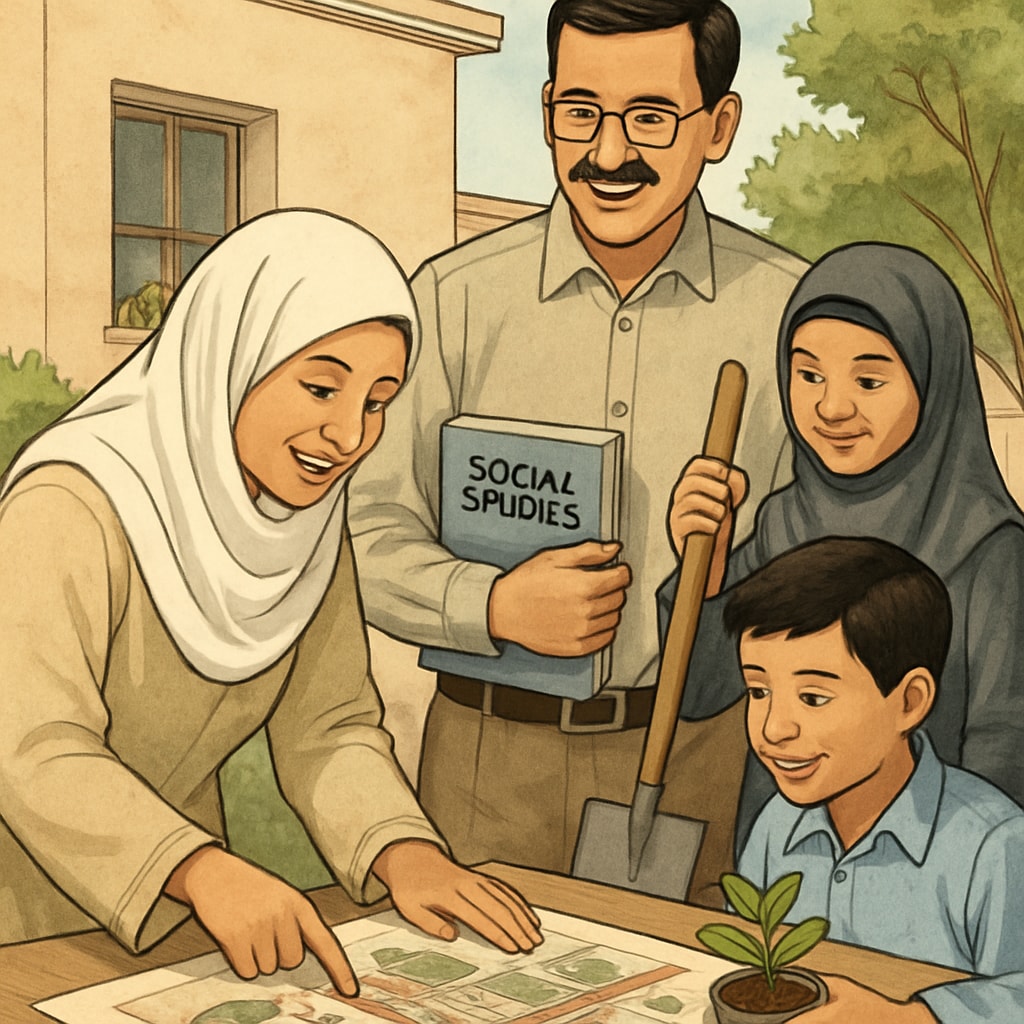The need for a robust and thoughtfully designed teaching framework in Gaza is one of the most pressing challenges following years of conflict. Developing comprehensive curricula for science and social studies in newly established public schools is vital for ensuring that children not only acquire essential knowledge but also gain the tools to foster peace, critical thinking, and sustainable growth. This mission is not only an educational endeavor—it is an investment in the future of Gaza’s youth and society.

Why Science and Social Studies Are Crucial for Gaza’s Future
Science and social studies stand at the intersection of academic learning and societal development. Science education equips students with problem-solving skills, technological literacy, and an understanding of the natural world. For example, teaching concepts such as environmental sustainability can empower young minds to address local ecological challenges while contributing to global efforts.
On the other hand, social studies provide the foundation for understanding history, culture, and civic responsibilities. In a post-conflict setting like Gaza, these subjects play a critical role in teaching empathy, cultural appreciation, and the importance of peaceful coexistence. Both disciplines, when integrated thoughtfully, can lay the groundwork for a resilient, well-informed generation.
Challenges in Curriculum Development for Post-Conflict Zones
Developing curricula for Gaza’s schools comes with unique challenges. First, educators must balance academic rigor with sensitivity to the traumatic experiences many children have faced. Additionally, limited resources—both physical and financial—can restrict the scope of teaching materials and methods. Collaboration with international organizations and education experts may be necessary to overcome these barriers.
Another hurdle is ensuring that the curricula promote inclusivity and avoid bias. For instance, social studies lessons must be designed to encourage critical thinking and dialogue rather than perpetuating divisions. Similarly, science topics should be locally relevant, addressing issues such as water scarcity or renewable energy solutions.

Key Elements of an Effective Curriculum
To design effective science and social studies curricula for Gaza schools, several key elements must be considered:
- Peace Education: Incorporating lessons on conflict resolution, cultural understanding, and emotional well-being into both subjects.
- Hands-On Learning: Using experiments, group projects, and interactive activities to engage students and make learning practical.
- Local Context: Addressing issues specific to Gaza, such as environmental challenges or the importance of community rebuilding.
- Global Perspective: Teaching global scientific advancements and historical connections to foster a sense of belonging to the larger world.
By integrating these elements, educators can create a curriculum that not only meets academic standards but also nurtures the holistic development of students.
Collaborative Solutions for Curriculum Implementation
To ensure successful implementation, collaboration between local educators, government bodies, and international organizations is essential. For example, UNESCO offers frameworks for peace education that can be adapted to the specific needs of Gaza. Similarly, partnerships with non-profits specializing in education technology can provide digital tools that compensate for resource limitations.
Training teachers is equally important. Workshops focusing on trauma-informed teaching methods and cross-cultural dialogue can prepare educators to handle sensitive topics effectively. As a result, teachers can become catalysts for change, fostering a positive learning environment despite challenging conditions.
In conclusion, designing science and social studies curricula for public schools in Gaza is about more than academic achievement—it is about rebuilding hope and nurturing the next generation of leaders who can contribute to a peaceful and sustainable future. By addressing the unique needs of Gaza’s children and integrating global perspectives with local realities, educators can create a curriculum that empowers students to thrive.


